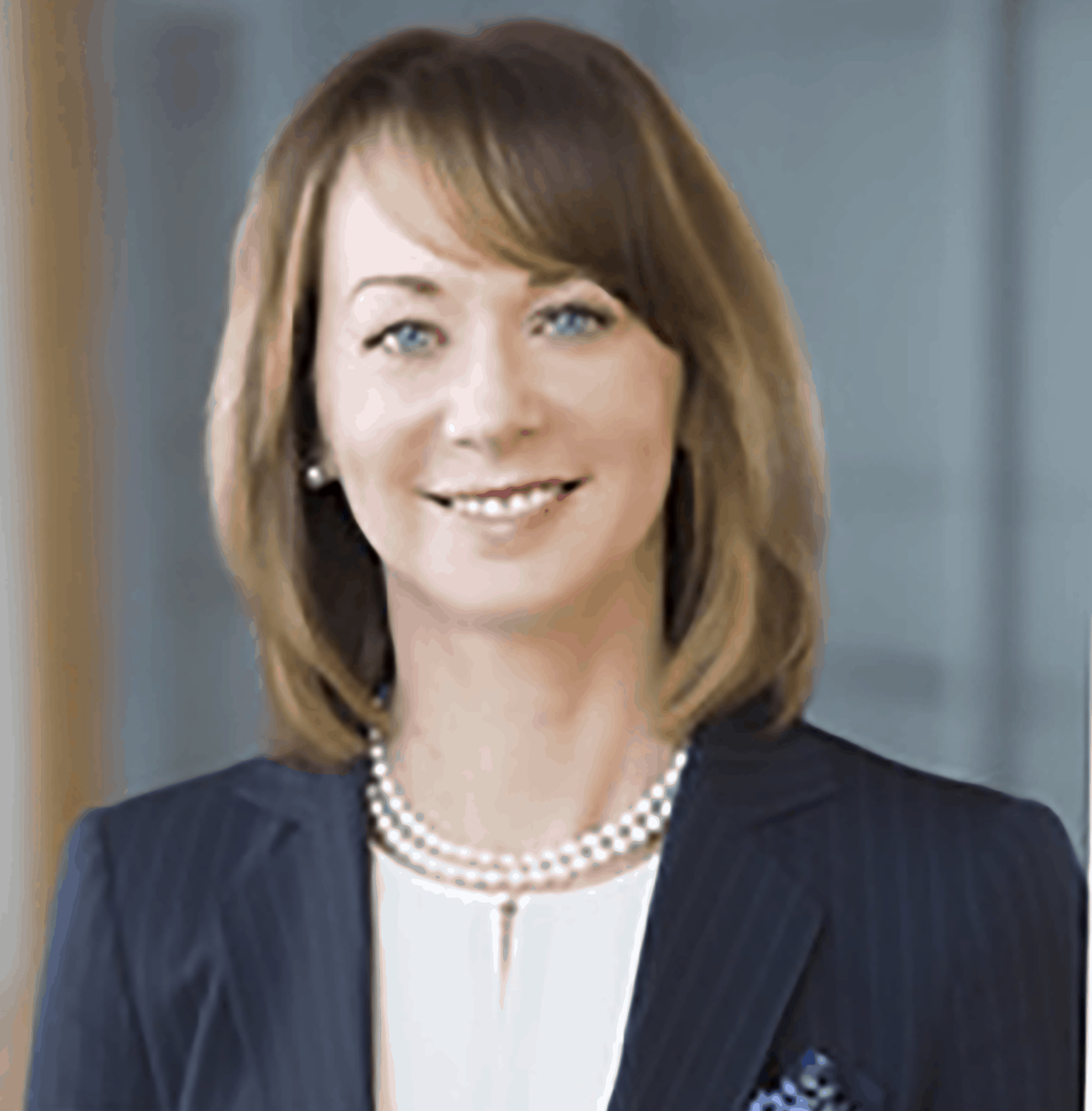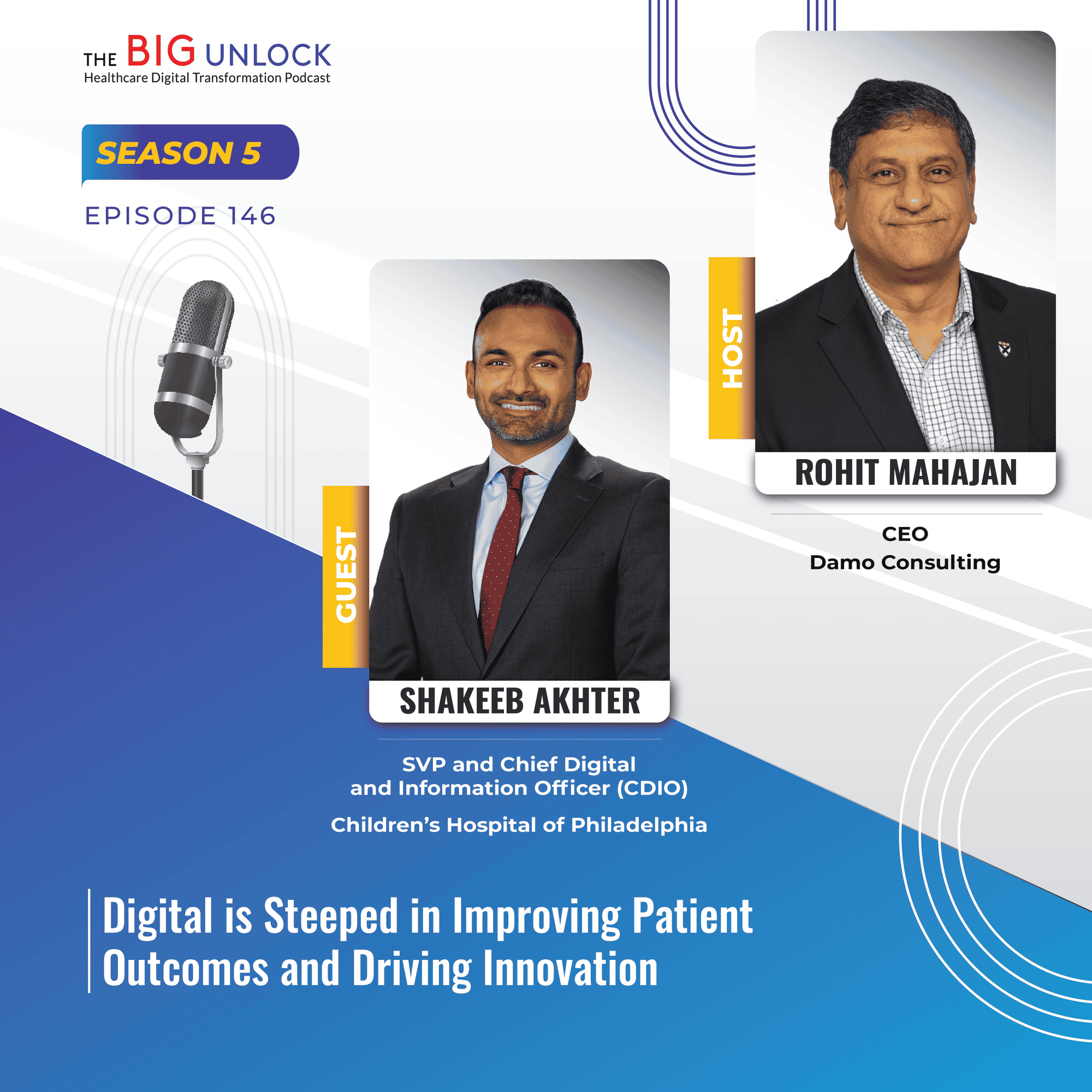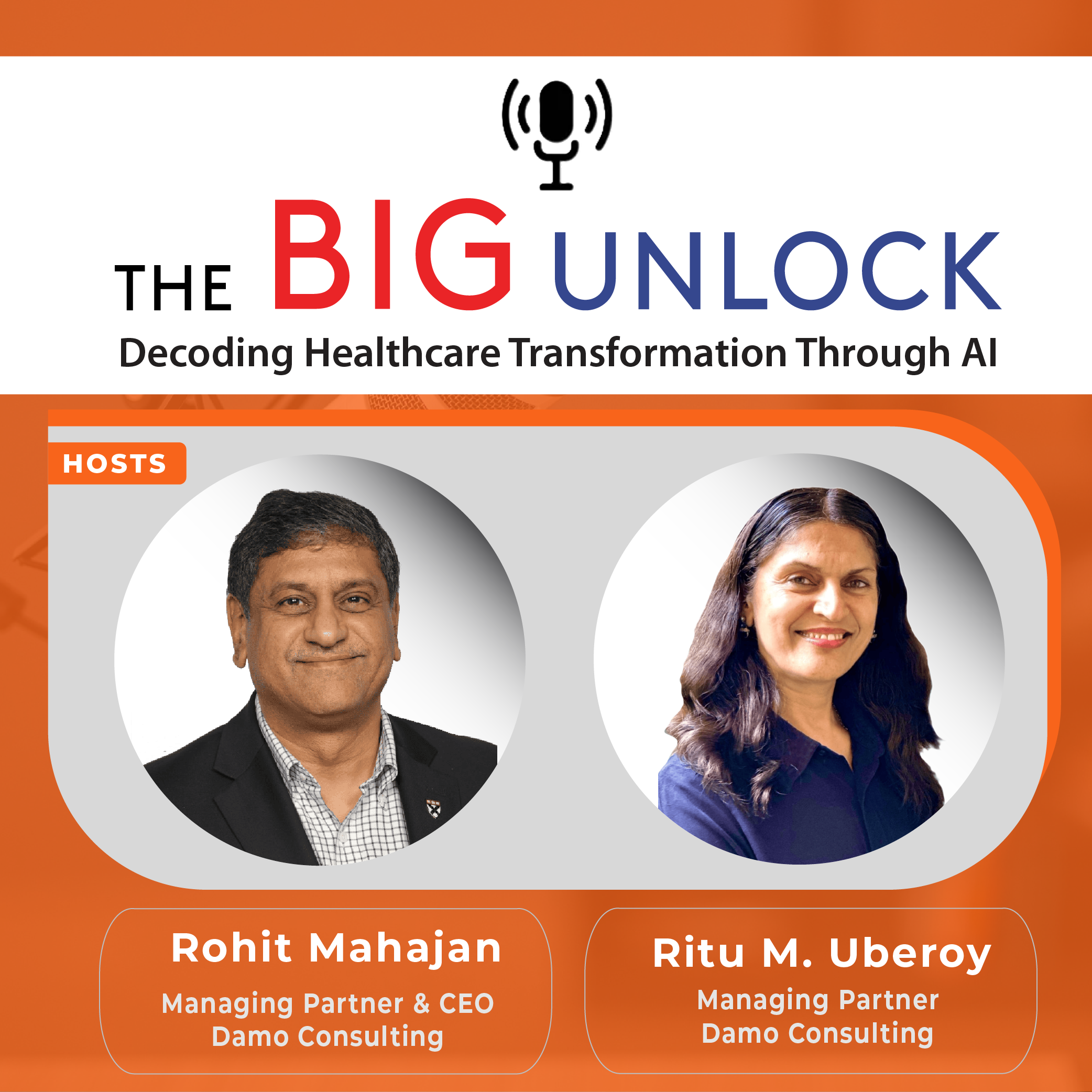Episode #38
We’re empowering our members with data and transparency.
 Hosted by Paddy Padmanabhan
Hosted by Paddy Padmanabhan

In this episode, Diana Nole discusses Wolters Kluwer’s healthcare business and how they are building expert solutions for insights and evidence that are more deeply embedded into clinical workflows. She also discusses how digital transformation is much more than digital front doors.
Wolters Kluwer Health has invested significantly in digitizing their products and offerings over the past few years. They now use advanced technologies such as AI and NLP to enhance their heavily curated content to provide quick and easy-to-find answers for evidence-based clinical decisions. They are also enhancing the delivery of their content with emerging technologies such as voice-recognition. Additionally, they are also improving the user interface by delivering smaller nuggets of curated information customized for individual patients and caregivers. Diana and her team are using voice-enablement to enable clinicians to learn in a setting that's more interactive and stay updated on the latest practices and clinical knowledge.
Diana believes in evidence-based data to enhance user experience with the latest available technology. Their focus now is on getting patients to engage more, especially those that need stay on very good pathways for their own health.
Podcast transcript
PP: Can you tell us a little bit about your healthcare business for the benefit of our audiences?
DN: We like to think of ourselves as a very helpful business. Our focus is around making sure every patient has the opportunity to benefit from the best evidence and data. We really focus on what prevents that and what causes variation. We start with education. We have a suite of education tools that continually evolves. As you think about how students get educated today, it’s very different than in the past. But then when they go into practice, as soon as they walk out of the door, they need to keep learning and be updated on what’s the latest practice techniques. As they continue their research and education, we stay with them throughout that. Again, really focusing on what causes breakdowns in clinical care, really caused by variation. So that’s a little bit about who we are and our suite of solutions really tailors towards that.
PP: Would you care to share your thoughts on the final ruling on the interoperability question made recently by the HHS?
DN: I think all of us are trying to digest it as I understand it. I think it’s over like twelve hundred pages. So, we will learn a lot. But I think at the core of this, we really are a supporter of needing to have good strong interoperability without sacrificing any issues relative to privacy or security. So we believe for the long term, if you really want to have the benefits of a digital system and digital ecosystem and be able to support things like AI and its ability to really alter and augment the intelligence that our clinicians need, you have to be able to do this. And we still struggle with that in many cases. And so, the aspect of standards and procedures and interoperability is very important. So, I look forward to, as does my team, really understanding how this may help advance that. I think it’s early days, but certainly we are positive that a ruling has come out and helps to put guidelines for all of us that are kind of working within the system of how to operate best.
PP: Did anything leap out at you when you saw the initial press release, anything at all?
PP: Yeah, I think that the interesting thing is, there’s always been this aspect of who owns the data and whether they have to pay for the data; so they clearly are saying patients should be able to get access to their data without any issues and without having to pay any fees. I think for us working within the ecosystem, it helps to understand how this will actually work as we interface and integrate it into, like the EHR systems. For us the most important thing on our clinical practice side is really how can we do this and how can we do this as quickly and efficiently as possible. So, I think there have been some things written in the document that kind of talks about from a contractual arrangement, things you can and can’t do that would sort of define you being information blocking or not. So, we think that will maybe actually help us in our arrangements with our EHRs. We were very critical and important to us.
PP: What is the current state of maturity of digital transformation as it’s defined broadly in the healthcare ecosystem, in your perspective?
DN: It’s a big question. And obviously you’ll get lots of opinions. But from my perspective, I think we’re beyond sort of the foundation building. I mean, things really are in digital format. We did talk just briefly now about the interoperability issue. We still are plagued by the fact that we can’t probably get data in and out of the system for all the various use cases that could potentially use it. So, I think we’re beyond the foundation building. I do think you’re seeing some nice basic enhancements to experiences on the patient side. You know, there’s pretty basic things, but you can see what your lab results are. You sort of have a place where all of your data is. If you’re in a certain system, you have the ability to do electronic check-ins. We see telemedicine kind of coming up and we’re starting to see some ability to see sort of AI and its application where we have large data sets of labeled things.
I came from the world of radiology. I think there’s a lot of thought that now that we have all of this labeled data, we could apply AI and AI could augment a radiologist role and understanding where there are issues. So, we’re still I would say sort of early on. I think that is really where I think the hope is. If you go back to our focus around variations in care, you still have a lot of handoffs that aren’t managed well within the digital ecosystem. Once the doctor sees the patient and they kind of decide on a treatment path, is it all carried out even out to the patient? I mean, a customer told me, you know, a simple thing is now we can tell whether a patient has actually picked up their medication or not. It’s a simple thing, but obviously goes into a lot of parameters around, OK. They didn’t pick it up. Should we reach out? Can we have a discussion with them? Can we understand what happened? Is it a cost issue? Is it an access issue? What is it?
I think we’re also in that stage where we’re starting to better appreciate what the true connection of digital health could mean for us. And I think that’s still you know, that’s the vision that we’re all kind of working toward. So still in the basics. But, you know, moving through and got a lot of good foundations laid.
PP: In another podcast, the CEO of Wolters Kluwer, Nancy McKinstry, talked about the massive digital transformation that you folks have gone through as a company. Can you share a little bit about what that feels like for your business and share some learnings from that?
DN: Yeah. So, in health, we’ve gone through a similar transformation in our content-oriented business. It’s very heavily curated, just like the rest of our businesses within Wolters Kluwer. And so, the first step was taking everything from what used to be in a printed format and getting in a digital, and 90 percent of all of our solutions now are in digital. We still do have books. People do like hard books and hard journals.
But now, just like we talked about the transformation, the EHR kind of gets everything into digital. We have gotten everything into digital. But now what we’re really focused on is something we referred to as expert solutions and expert solutions or more deeply embedded into the workflow, take into context the use cases of how they’re used. I’ll use as an example UpToDate. We have now gone to something referred to as UpToDate Pathways, and that is more than augmented or guided decision-making tool for specific things that have evidence that’s very strong but wide areas of variation. So, we are really starting to see the move from just taking something that was in print and moving into digital and now moving it into expert solutions. And that’s really where our focus is, where I think we’ll unlock a lot more value and being able to serve exactly the content that our customers need. Having them have to rely on the questions to ask to serve up the content is not the long-term goal. We want to be able to take the patient information from the EHR and provide what we think is most relevant and help them kind of walk through, especially for complex situations. The best way that they could consider a treatment for their patients. So, we also are in a transformation. It’s very exciting, though, because I think that’s really where you see significant impact on patient outcomes if you can do that.
PP: I imagine you use a lot of natural language processing because you’re a content-heavy business in order to curate the content and to get to answers faster than you would through conventional or traditional news. Are you also changing the way you deliver this content?
DN: So, in terms of digitizing it and delivering it in different ways, we’ve been thinking about what’s the interface. We are working on voice because we think voice will be one element of how you might want to get the content and then serving it up. I think what you’ll find is instead of lengthy textual things, you’ll see something either in a curated order or much smaller. We also have, just recently, even in our more patient oriented space, videos that interact with the patient to help them get prepared or help educate them on things that they’re experiencing. We definitely have found in that world we need to have smaller nuggets and to be able to kind of customize it more for the patient and allow them a little bit more flexibility. So, I think you’re right in the fact that the way we serve up the content will be very different, and different types of content, whether it’s video, whether you do it by voice; those things will continue. It’s all about the user experience now and how can you best use the most available technology? So, you hit on a great point there.
PP: Based on what we are seeing, the focus of digital transformation is on digital front doors and the consumer interface. Do you think that is too narrow and limiting a definition? What are your thoughts on what else health systems should be looking at as we transform the entire system really?
DN: I think the digital front door is just the start. If you use that analogy, there’s so much more in the house that you want to be able to use. I think that we obviously had to have that window and you have to have that be some kind of an enhanced experience. So, people want to open that door. But if you think about it, the type of information I mentioned before, you can now get your lab results. But the lab results, most of us as consumers of that information, we don’t really quite understand what it would be. So if you think about moving more into how are you going to actually manage your health and how do you really get the patients to engage, especially those that really do need to engage and stay on very good pathways for their own health. That’s why we saw so much value and made the investment in the acquisition we did a few years ago. Emmi was really beyond just patient engagement, but it was shared decision making as well as really helping patients as they move into their home healthcare in a transitional environment. So that’s more of how do you stay connected with them? Get things like, register your sugar levels, how is your pain level doing and then how do you really get to understand how that patient wants to interact? And do you see the ability to see when a patient is going into rising risk such that you will outbound and outreach to them to help keep them in their home healthcare environment, which is probably the best situation for them? So, I see it much more oriented towards true engagement with the patient on a much more sophisticated level. But it’s easy to interface with not just the portal, if you will.
PP: You’re kind of at the intersection of education and healthcare. Education itself is going through a dramatic transformation in its own way. What are you seeing there that’s comparable to the kind of transformation the health systems are going through? And how are you enabling that transformation?
DN: Yeah. And it’s really interesting because I called on an academic and I think the professor said people don’t really come to the lectures anymore. And so, it’s sort of indicative of what a student wants, and a student wants to kind of mimic what they’re going to be asked to do outside in the real world. So, we definitely see virtual simulation for things like nursing labs. The interface with the EHRs so they practice within sort of a version of that. But more importantly, what we’ve also done is we’ve integrated technology around adaptive testing where the student can self-test themselves. You can’t game the system. It’s based on AI so it constantly kind of thinks about how you answer something and then serves up additional things. But it really understands if you are getting to the core of clinical judgment. Can you actually understand in these various scenarios how you would react? And we believe and there’s evidence that shows that they’re much more ready. They have higher scores on their high-risk test exams and they really then get out into the world and are ready to go and practice right off the bat.
So, I think that that’s one aspect at the initial education and then the subsequent things, we do a lot of education. We obviously have the ability to do continuing medical education within UpToDate. And then we also have the aspects of our product called Audio Digest, where you can actually continue to learn along the way in a setting that’s more indicative again. Listen in the car, listen while you’re working out, how do you just continue to kind of have those? So, the way people stay updated on the latest practices and how they get their clinical knowledge and judgment at the beginning has definitely changed. It’s much more exciting, I think, as well. Students react much better about getting in and really kind of looking at real life situations.
PP: There is also a component of the infrastructure that is required to support digital front doors and patient engagement and so on. What is your sense of where health systems are, especially as it relates to your solutions? Are the infrastructural components that you expect health systems to have in place and are they ready for what you are providing to them?
DN: Yeah, that’s a really big broad question because I would probably say we all think that there’s still things to invest in. The EHR kind of is the big road, right? The big pipes around the hospital system. But what you’re tending to see, which is typical of where we’re at in the stages, is you see digital solutions popping up. And it’s unclear to us sometimes that as a vendor exactly who will own that. Some of our systems have put in place, like a Digital Health Officer, but we still find that projects and initiatives seem to be owned and influenced in a particular area. And so, will the Chief Nursing Officer still be overly responsible for things that deal with patient experience, patient education, patient interface. I don’t know that we see the need for additional infrastructure to be built. I do think people are still very worried about the aspects of security and privacy and all of those. So, I think that will continue to be an evolving state of affairs.
In terms of the infrastructure, I think most of that is in place. I do also think that you’ll see these naturally have different types of solutions. But ultimately our customers are recognizing that the way a patient is cared for is kind of shifting from various pieces of the solution, like a doctor, a nurse, and a pharmacist to actually seeing the whole ecosystem of the care team. And that’s where we’re trying to work on our own solutions, of how to make sure that we start wherever possible, can populate our solutions with each other’s data. So, as an example, if you’re in UpToDate as a doctor, we do populate drug information and access that we will put Emmi videos in there so you can see what the patient might be prescribed as far as patient engagement. We’re just trying to make the user interface is consistent. So, we are trying to make our own sort of clinical decision support suite look like a suite, act like a suite, have information accessible to it so it can support the movement to the care team approach.
PP: You may have a Chief Digital Officer who is making decisions on certain types of solutions, but then there are other solutions for which functional leaders like the CNIO, for instance, are making the decision. Are you seeing this all converging in some way to some kind of an org model which is becoming a defacto standard like a digital transformation office, for example? Are you seeing that happening? Or do you anticipate that it will continue to be the way it is, which is that decision making will remain fragmented based on the type of solution that people are buying?
DN: We definitely are seeing decisions become more solution, holistic enterprise wide. I think the org models specifically are continuing to evolve. So even when organizations have put in place a Digital Health Officer, they themselves are still getting the lay of the land in terms of how to bring in the right influential clinical people to get to a decision. But we definitely have seen more and more decisions being made sort of enterprise wide, and consolidation sort of more structure around how the decisions are made, which ultimately I think is going to be a very good outcome while not sacrificing any particulars that may need to happen at a particular site. So, I think they’re being very thoughtful about it.
PP: We’re in the middle of the Coronavirus. How is your business coping with the impact and how are you helping your customers cope with the impact?
DN: Yeah. I really do truly hope that we’re more in the middle than it’s still at the beginning. Obviously, we have our own employees that we want to make sure that we have good care around them. And so, we always continue to make sure they’re in a safe environment and have flexibility for them in terms of working from home. In terms of our customers, we’ve made readily available whatever information we have on the situation. We’ve just posted it out there. We’ve posted access for patients. If you as a consumer want to understand what’s real and what’s the facts. We’ve made that available so that we try to put that out there to kind of depict fact versus, you know, maybe not facts.
In terms of our customers obviously, our customers are bearing the biggest burden of all of this right now. And so, we’ve been very flexible. I’ll give you some examples. From a sales call perspective, a support call perspective, if we had planned onsite visits, we’ve automatically called them and said, would you prefer us to just do it virtually. About 50 percent are doing virtual kind of conversations with us right now. And then we have a lot of relationships with societies and many of the societies have had to cancel their conferences. And so, we’re working with them on how we can get there. Very valuable information was going to be presented at those conferences, how can we still get it out? So, we’re kind of working with them on flexibility of trying to still sort of in a virtual environment, get to the objectives that they had for those things. So those are some of the things that we are doing in this current state.
We hope you enjoyed this podcast. Subscribe to our podcast series at www.thebigunlock.com and write to us at [email protected]
Disclaimer: This Q&A has been derived from the podcast transcript and has been edited for readability and clarity.
About our guest

Diana Nole is the CEO of Wolters Kluwer Health, a leading global provider of trusted clinical technology and evidence-based solutions that engage clinicians, patients, researchers, students, and the next generation of healthcare providers with advanced clinical decision support, learning and research, and clinical intelligence.
Wolters Kluwer Health solutions support more than 2.5 million clinicians in 187 countries and educate over 1 million medical and nursing students under Diana’s direction. Research and development investments leverage the latest technologies including artificial intelligence to deliver innovative solutions that improve the quality and cost of healthcare, specifically focused on: user experience, decision support, disease detection, advanced workflows, and analytics. Her approach as CEO for Wolters Kluwer is to focus on the customer, drive a sense of urgency, and execute on plans.
Prior to joining Wolters Kluwer Health, Diana served as President of Carestream’s Medical Digital division, a global leader in medical imaging systems. Under Diana’s leadership, the breakthrough wireless x-ray detector, DRX-1, and mobile x-ray solution, DRX-Revolution were introduced and gained market leadership positions. During her tenure, Carestream’s healthcare IT solutions also received “Best in KLAS” designations and the company was chosen as vendor of choice by large, prestigious global healthcare providers across the globe. A nice recognition and acknowledgement by customers that these solutions had a true and meaningful impact. She has held a number of executive positions and is a passionate leader behind many healthcare technology innovations. Her view of the rapid evolution of technology is not one of a challenge but, rather, a chance to unlock new opportunities.
Diana holds an MBA from the William E. Simon Business School and a B.A. degree with Magna Cum Laude honors in Computer Science and Mathematics from the State University of New York. In addition, Diana is currently a Board Trustee of St. John Fisher College, recently appointed their first female Vice Chair, a Board Director of ESL Federal Credit Union, and a Board Director and Chair of the Audit committee of the life sciences company, Clinical Ink.
Recent Episodes
See all Nominate a guestAbout the host
Paddy Padmanabhan is a widely published and quoted thought leader on digital transformation in healthcare. He is the author of The Big Unlock: Harnessing Data and Growing Digital Health Businesses in a Value-Based Care Era, and the CEO of Damo Consulting Inc, a digital transformation and growth advisory firm based in Chicago.Connect
Share on facebook Share on twitter Share on linkedin Share on email

In this podcast, Amber Fencl, VP of Digital Health and Engagement at Novant Health, discusses how innovations in technology are driving healthcare and enabling...

In this podcast, B.J. Moore, EVP and CIO of Providence Health discusses the organizational structure at Providence to drive transformation and how he draws...